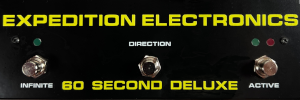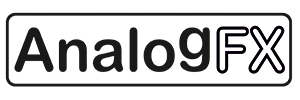Showing posts sorted by relevance for query Buchla Touché. Sort by date Show all posts
Showing posts sorted by relevance for query Buchla Touché. Sort by date Show all posts
Tuesday, April 10, 2018
Shasta Cults - Buchla Touché Waveshapes
Published on Apr 8, 2018 Shasta Cults
This is the first video ever featuring the graphic output of the Buchla Touché waveshapes, from currently the ONLY Buchla Touché with the ability to display them. This is as rare as it gets in the synth world.
"The Touché uses non linear wave shaping for timbre generation, same as the 360, 400, 700 and 259e (a distortion based wave shaping technique). It has 9 native wave shape tables (6 user programmable). A sine wave is generated digitally and then sent through the selected table. Timbre is effected by the amplitude of the sine wave, so it accents high and low harmonics more, based on sine wave level. Timbre modulation was Don Buchla's wave shape technique. This particular Touché is a development model that will display wave shapes, as well as allow you can program your own… if you can figure it out." See this page for some technical info on Waveshaping from ussb.edu.
The following was composed on the Touché using sine waves.
You can find previous posts featuring the rare Buchla Touché here.
Wednesday, November 01, 2023
Buchla Touché (1980) – Hybrid Analog Keyboard Instrument



The following was sent in by Anastasia Chernysheva, a Ph.D. student at University of Illinois Urbana-Champaign.
"In 1979, Donald Buchla invited experimental composer and his friend, David Rosenboom to collaborate on the design of a new, keyboard instrument with digital sound generation and hybrid, computer-controlled, analog outputs. The result was the Touché, released in the spring of 1980.
Among particular traits of the instrument are:
• flexibility in use – highly programmable, (64 programmable function parameters available), Touché offers a library of “instrument” structures that could be stored as “presets”;
• responsiveness – a user of Touché would enjoy a broad ability to program multiple stimuli and response structures in performance;
• non-linear waveshaping – Touché permits to produce an enormous range of sound with efficient means of control, i.e. using a small number of knobs
The guiding idea of the instrument design was to optimize it for live performance. The hybrid, digital-analog nature of Touché assumes the following.
• On the digital side: a sound-generating engine produced a wide range of timbre of sound possibilities with non-linear wave shaping techniques.
• On the analog side: a programmable analog circuit called Multiple Arbitrary Function Generator (MARF) enabled extensive control of all sound synthesis parameters.
Rosenboom’s recordings Future Travel (1981) and Daytime Viewing (1983) offer extensive exposure to some particular sound worlds created with the Touché. Other than being used for these recordings and in the recent release by Richard Smith a.k.a. Shusta Cults, (the current owner of Rosenboom’s Touché), the instrument barely may be heard in any other recording. Only 4 instruments exist today but just one of them is in the functional condition.
To learn more about the history and design of the instrument check out the lecture about Buchla Touché given at University of Illinois (2022). Technical parameters of the instrument may be found in the brochure for the instrument. Download the PDF here."
Circuits and Fingers – Composer-Performer Convergence in Electronic Instrument Designs, Oct 5th
video upload by Illinois Music
"Guest lecture at EMS Forum: Circuits and Fingers – Composer-Performer Convergence in Electronic Instrument Designs, Oct 5th
With the director of Experimental Music Studios – Eli Fieldsteel.
Learn more: https://davidrosenboom.com/miller-res..."
Also see Brainwave Music with Buchla 200 at Western Front.
Monday, October 30, 2017
Buchla Touché - Digital Analog Hybrid Synthesizer Keyboard Demo
"Day 1 - Buchla Touché live manipulation. Oct 2017"
The Buchla Touché has only been referenced twice before here on the site. This is the first post to feature a demo of one. Only a few Buchla Touché exist. Four are confirmed to be out there, and I believe this is the only fully functional one. The Touché is a digital synth with analog gates and outputs, released in 1979.
Wednesday, November 13, 2019
Shasta Cults Self Titled Release Featuring the Buchla Touché
Pre-order on black and clear vinyl at IMPREC, and digital at BandCamp.
"Wonderful to hear such beautiful, billowing sound clouds emanating from the legendary Touché." - David Rosenboom
Shasta Cults is the musical project of Canadian electronics technician Richard Smith. For almost two decades, Smith was the official Buchla & Associates repair tech for studios, collectors, and musicians around the world. Having worked for artists such as Aphex Twin, Suzanne Ciani, Morton Subotnick and institutions such as The Library of Congress and Mills College, Smith has had the unique experience of restoring and interacting with nearly every model of Buchla instrument constructed over the past 50 years.
Recorded over the span of three months in the fall of 2018, this album was programmed using the only fully functional Buchla Touché. Developed in the early 1980s with hardware by Donald Buchla and software programmed by musician David Rosenboom, the Touché features waveforms generated internally by twenty-four digital oscillators and uses frequency modulation along with sophisticated digital and analog signal processing to produce complex timbres.
This LP is a continuation of themes first heard on Configurations, with more consideration given to the generation and recording of the pieces. The album's six tracks – a collection of sonic experiments and hypnotic drones – span almost forty minutes, showcasing not only the incredible fidelity of the Touché but also Smith's evolution as an audio engineer.
Put on some headphones, find a comfortable chair, and let this LP transport you to the mystifying southern cascades of Siskiyou County.
RIYL: ELEH, Sarah Davachi
released November 13, 2019
Programmed, recorded and mastered by Shasta Cults - Fall 2018
Artwork by IMPREC
all rights reserved
Friday, December 27, 2024
Buchla, Make Noise, & A History of Spectral Animation in Synthesizers
video upload by Sarah Belle Reid
"A historical and technical deep dive into the synthesizer designs and ideas that influenced the development of the Make Noise x Soundhack Spectraphon, featuring excerpts from an interview with Tom Erbe.
Spectraphon is an oscillator for Eurorack modular systems that allows you to analyze and resynthesize sonic characteristics of OTHER sounds, using those characteristics to create unique waveforms and timbres…with the ability to continuously transform them into something new. It’s Erbe’s unique take on the concept of a harmonic oscillator—inspired by some of instrument designer Donald Buchla’s work from the 1970s and 1980s.
Erbe and Make Noise specifically name three Buchla instruments as important inspirations: the Model 259 Programmable Complex Waveform Generator, the Model 296 Programmable Spectral Processor, and the Touché, a hybrid keyboard instrument developed in collaboration between Don Buchla and David Rosenboom.
This video unpacks each of these instruments in turn, examining how their innovative approaches to timbre control and spectral manipulation influenced Spectraphon’s design.
Special thanks to Tom Erbe for sharing his insights on Spectraphon’s development and its relationship to these historic Buchla instruments, and to the Buchla Archives for providing images.
Buchla Touché footage made possible by the Buchla Archives—check out Buchla Archives website: https://www.buchlaarchives.com/
Watch my Spectraphon Overview + Exploration video:" [posted here]
Wednesday, September 04, 2013
Genesis of an Instrument: The Pioneering Work of Donald Buchla at New Form's Festival
via the New Forms Festival website:
"Genesis of an Instrument: The Pioneering Work of Donald Buchla
VIVO Media Arts Centre, 1965 Main
 Instrument Exhibition open:
Instrument Exhibition open: Thursday, September 12, 7-10 pm
Friday, September 13, 12-7 pm
Saturday, September 14, 12-7pm
Donald Buchla Performance / Q&A:
Friday September 13, 7-10
with: Sarah Davachi and Richard Smith
In 1963, Berkeley-based designer and instrument builder Donald Buchla began constructing his first electronic musical instruments. This year celebrates the 50thanniversary of his pioneering and highly innovative contributions to the field of electronic music, and New Forms Festival is very excited to welcome Mr. Buchla to Vancouver for what is sure to be a highly-anticipated performance at VIVO Media Arts Centre. This historic event will also feature an extensive exhibition of the most complete collection of Buchla instruments in existence, offering the public a unique and extremely rare opportunity to experience the union of the maker and his creations.
Reflecting a background in music, physics, and physiology, Buchla’s approaches to instrument design and sonic experimentation are known for being multi-faceted and highly inventive, particularly in relation to his interest in interfaces that bridge the communicative gap between man and machine. His work includes early voltage-controlled systems such as the 100 and 200 modular series, the Music Easel performance system, digital-analog hybrids such as the Touché, gesture-controlled instruments such as the Lightning, Thunder, and Marimba Lumina, and his most recent project, the 200e Electric Music Box. He has worked with storied institutions and organizations such as the California Institute of the Arts, the San Francisco Tape Music Center, and New York’s Electric Circus, and has collaborated with a number of prominent experimental musicians including David Rosenboom, Suzanne Ciani, Morton Subotnick, George Lewis, Anthony Braxton, and David Wessel."
Follow-up to this post.
Wednesday, January 08, 2025
Buchla Easel Slonimsky 12-Tone Synth Line + Touché Controller
video upload by 1024bpm
"'Hardstyle' Buchla Synth Line + 12-Tone Row | Live Improvisation with Touché Controller
In this live improv I take a 12-tone row from Nicolas Slonimsky’s Thesaurus of Scales and Melodic Patterns and control it with the Expressive E Touché SE controller.
This is part of my current exploration of touch-sensitive /tactile input devices and other gear to find out, which devices I can use to expand the possibilites of the Easel.
🔊 Gear used:
• Buchla EaselSynthesizer
• Expressive E Touché SE Controller
• Nicolas Slonimsky’s Thesaurus of Scales and Melodic Patterns"
www.stefanschultze.com
https://stefanschultze.bandcamp.com/
Sunday, October 29, 2023
Stereo Transfer Function Synthesizer - Proof of Concept (Teensy)
video upload by Ryan Gaston
"A simple demonstration of some of the sounds yielded from a simple Teensy-based synthesizer. This is a proof of concept more than anything else; ultimately, this will be integrated into a more complete instrument.
The internal signal path is based on a combination of phase modulation, frequency modulation, and digital waveshaping via arbitrarily constructed transfer functions. Three oscillators intertwine in various ways, each contributing to the sound's instantaneous timbre, pitch, loudness, and sense of spatial location. The use of many internal feedback/feedforward nodes enhances the potential for chaotic, unpredictable sonic structures.
Originally, the idea was to create a stereo oscillator with transfer function-based waveshaping; however, I found that with a sufficiently knotted internal signal flow, it was possible to achieve a pretty astonishing range of animated sounds using relatively limited means. Though very much inspired by the Hordijk Blippoo Box, Hordijk Benjolin, Serge Wave Multipliers, Buchla Touché, Buchla 400, Buchla 700, and Buchla 259e, and some experimental works by Larry Polansky, I'm finding that there's much more sonic territory to be explored utilizing the bizarre combination of feedback and waveshaping via arbitrary transfer functions.
Again, I hope to continue to expand this into a more complete, performable instrument. But for now, enjoy some noise."
Friday, May 12, 2023
Make Noise SoundHack Spectraphon | Overview & Exploration
video upload by Sarah Belle Reid
"A demo & walkthrough of the new Eurorack module Spectraphon, by Make Noise. Spectraphon is a dual complex oscillator that explores additive synthesis and resynthesis—allowing you to analyze and resynthesize characteristics of other sounds to create super unique timbres and waveforms.
This video includes an overview of what Spectraphon is and how it works, along with a number of patch examples demonstrating Spectraphon as a dual oscillator, and as an effects processor to create rich, resonator / spectral-blurring type sounds.
Spectraphon’s design is inspired by the Buchla 259 Programmable Complex Waveform Generator, the Buchla 296 Programmable Spectral Processor, and the Buchla Touché—taking parts of each of these designs and combining them into something new and unique."
Thursday, May 17, 2007
Barry Schrader, Morton Subotnick and John Payne - CalArts studio B-304
"The following flickr stream was from CalArts studio B-304 taken in the fall of 1976 featuring Barry Schrader, Morton Subotnick and John Payne and a whole lotta Buchla 500. John as you may remember came up a couple of months ago on Matrixsynth in the posting regarding Mort's use of the 300 at Ircam [link]. He went on in later years to become the Assistant Dean of the CIA School of Music and founder of it's Music Tech department. Photo b_304.2 has a good view of the entire studio, save the three other JBL's which are out of frame (it was a quad studio - there was one in each corner)."
b_304.1 pictured.
"Barry Schrader, Morton Subotnick and John Payne stand in front of the Buchla 500 in CalArts' sudio B-304 in the fall of 1976."
via Peter Grenader.
Posts featuring Barry Schrader
Posts featuring Morton Subotnic
Posts featuring John Payne
Update: As always check the comments for more info.
via Peter:
"There are two more 500's that I know off - at Evergreen and another somewhere in Europe (pardon the senior moment, i don't remember where exactly). This is not to say there aren't others...I'm just not aware of any. The one in the photo here was the first - the development system Don constructed while on staff at CalArts. I do know the 500 was adondoned quickly and resurfaced as the 300 series which included direct routing of computer control the various modules (259 VCO and 292C Gate for example) -and- the digital VCOs."
"the box screwed into the side of the main cabinet is a speaker selector which i f i remember correctly wasn't on line. Another bit of trivia - this was taken about the time of Mort's Game Room project that Gary Chang, Jill Frazer, Darrell Johansen, Sue Harvey and I worked on. The room next to 304 (other side of the wall which is shown behind the Buchla) was 305. It had a large 100 system (three cabinets) and for the Game Room we cut a hole in the base of that wall to run audio cables out from the tape machines to play quad audio snippets into the game area. This also took signals directly from the game board in 305 where signals were decoded and sent to the various controllers (audio, film, Buchla-controlled OCR light dimmers, etc.).
Against the other wall - opposite the one behind the 500 - was studi oB-303, which was pretty much a duplicate of this one sans the computer control - so it was a 200 studio, not a 500 studio. It also had the huge JBL monitors which were hung form the ceiling on metal brackets made by Chas Smith (which are still in place today). There's a photo of 303 at Barry's Schrader's website: link
Most people preferred working in 303, mainly because the 258's were easier to get to. On the 500 system they were all on the top row, which was a pain for most. The upside - studio time was easy to book in 304 for this reason I spent a lot of the early mornings here - tarting usually at 4AM and going until classes began around 9."
via an anonymous comment:
"Evergreen has/had an early 300 its computer is non functional. There were 3 500s from what i understand, 1 went to Norway, 1 to a campus studio in NY and the 3rd was of course at CalArts..
the Norway one was moved around a lot as it was purchased by 2 or 3 studios/organizations and because of its fragile nature it didnt survive.. it was apparently parted out after it became nonfunctional.
The CalARTs system was also disassembled and parts were sold to various buyers around the US in the famouse 90's sale ..nobody is too sure what happened to the digial components..
the 3rd that was in NY was sold to a collector in the 90's, tho it should be noted that that system was returned to Buchla for upgrading/overhaul in the late 70's and was reassembled with 300 series components, so it is more of a 300 now then 500... I don't believe it has been tested or turned on in over a decade.
another note, there were 2 versions of the 300.. the early system used tech from the 500 (the gating matrix for example - which controlled early versions of the 281 and 292B gates - the remote function on later 281s and 292Cs was never implemented) the later 300s were more of a self contained system ( with 200 modules for processing ) which eventually became the Touché and the 400."
Thursday, June 28, 2018
Friday, December 29, 2017
Saturday, December 07, 2019
SHASTA CULTS - DA3
Premiered Dec 6, 2019 Shasta Cults
https://shastacults.bandcamp.com/
https://importantrecords.com/products...
Buchla Touché
Wednesday, November 01, 2023
Saturday, April 28, 2012
Wednesday, January 31, 2018
Monday, January 25, 2021
Buchla 200/200e with Expressive Touché
video by Luc Debeck
"I made some banana cables to mini jacks and used them to connect the 4 cv outs from the Touché to the Buchla, the 1979 MSV in this example. One of the 4 cables has a split cable grounding cable to the ground of the the case. It works perfect."
Thursday, May 11, 2023
MAKEN0ISE Introduces the Spectraphon!
Brett Naucke performs on the Spectraphon! video upload by MAKEN0ISE
"Brett Naucke performs new patches at Drop of Sun!
Asheville-based musician and Make Noise Records alumnus Brett Naucke performs three new patches on our brand new module— the Make Noise/soundhack Spectraphon— at the great Drop of Sun Studios here in Asheville, NC!
We are THRILLED to finally share our latest collaboration with Tom Erbe (soundhack), The Spectraphon! For more information on this dual spectral oscillator, head to: https://makenoisemusic.com/modules/sp...
For more info on Brett and his work, be sure to check out:
https://www.bnaucke.com/
https://open.spotify.com/artist/2MFjL...
https://brettnaucke.bandcamp.com/
This video was filmed at, recorded by and mastered by Drop of Sun Studios here in Asheville, NC. For more info on Drop of Sun, head to:
https://dropofsun.com/
https://www.instagram.com/_dropofsun_/"
via Make Noise
The Make Noise/soundhack Spectraphon is a dual Spectral Oscillator coded by Tom Erbe of soundhack. It uses real-time spectral analysis and resynthesis to create new sounds from those that already exist. It is inspired by classic electronic musical instruments of the past, including spectral processors, additive synthesis, vocoders, and resonators especially the Buchla 296 and Touché, but it takes a physical form more resembling the classic analog dual complex oscillator in the lineage of the Buchla 259 and the Make Noise DPO.
The Spectraphon is the first module to be built by Make Noise on its new digital hardware platform. This hardware, engineered by Jeff Snyder and Tony Rolando, provides more i/o at higher resolutions, and a lower noise floor than we have ever had access to in a digital module, allowing us to unleash Tom Erbe’s DSP code to a previously unattainable degree.
The Spectraphon has two nearly identical sides, A and B, which oscillate in one of two ways: Spectral Amplitude Modulation (SAM), or Spectral Array Oscillation (SAO). In SAM, instead of oscillating at all times like an analog VCO, sound at the Spectraphon’s input is used to modulate the amplitude of a set of harmonics. In SAM the Spectraphon can be sequenced and frequency modulated like any VCO. At any time the current spectrum can be used to create an Array for later use in SAO mode where the Spectraphon oscillates at all times, with the spectrum at the Odd and Even harmonic outputs being drawn from those stored Arrays.
The Slide and Focus controls are mode-dependent: in SAM, they determine how the Spectraphon responds to sound at the input for Spectral AM, while in SAO, they are used to modulate the Array. In either mode (SAM or SAO), the Partials control works as a combined amplitude and timbre gate for the Odd and Even harmonic output and the FM Bus will create high definition internal frequency modulation from the opposing side of the Spectraphon. The two sides can also interact via the internal FM Bus, the Follow and Sync modes, and by patching them together.
Monday, May 22, 2023
Stereo Patch From Scratch with Panic Girl featuring XPO, Buchla 258t Dual Oscillator and the Touché
video upload by Perfect Circuit
"Eurorack modular synthesizers are embracing stereo sound in new ways—over the last few years, we've seen a ton of stereo-oriented modules come out from top brands like Make Noise, SSF, and plenty more!
In this video, Panic Girl walks us through a stereo patch on her personal system, featuring the Make Noise XPO, Mimeophon, and the Tiptop Buchla 258t Dual Oscillator. This mix of mono and stereo modules makes a great learning ground for getting into the stereo mindset—so grab some headphones, tune in, and space out!
Learn about electronic music, techniques, and gear on our blog, Signal: https://www.perfectcircuit.com/signal"
Wednesday, May 17, 2023
The New Make Noise SoundHack Spectraphon - The Deep Dive Review
video upload by Perfect Circuit
"The Make Noise x SoundHack Spectraphon is a dual spectral oscillator for Eurorack modular synthesizers. At first glance, it might look somewhat like a classic "complex oscillator" in the style of Buchla's 259 or Make Noise's own DPO—but there's much more to it than that. To make a long story short, it offers a new and novel approach to sound design that we haven't quite seen in Eurorack before.
Rather than relying on wavefolding, Spectraphon is all about additive synthesis and resynthesis: you can think of it as an oscillator whose timbre is driven by external sound sources. Inspired by the Buchla 296 Programmable Spectral Processor and Touché hybrid keyboard synthesizer, it presents a new and novel take on sound generation and processing.
As a live processor, Spectraphon can be like a vocoder, a resonator, a pseudo-spectral freeze; as an oscillator, it creates a wide range of evolving tones based on stored analyses of external sounds. It's a dense module—so in this video, we dive into how it works and how it sounds.
Buy a Spectraphon of your own: https://bit.ly/438UEGN
Read about Spectraphon's inspiration and functionality on our blog, Signal: https://bit.ly/3BA7h1S
00:00 Introduction
01:20 Spectraphon, Additive Synthesis, and Resynthesis
03:54 Spectraphon Overview
07:23 Spectral Amplitude Modulation (SAM) Mode Demo
10:09 SAM Examples
12:36 Creating Arrays + Spectral Array Oscillation (SAO) Mode Demo
15:43 Many More Sound Examples
19:51 Summary + Check Out Our Blog, Signal!"
HOME
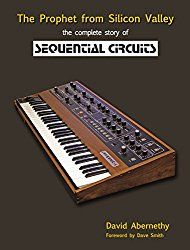



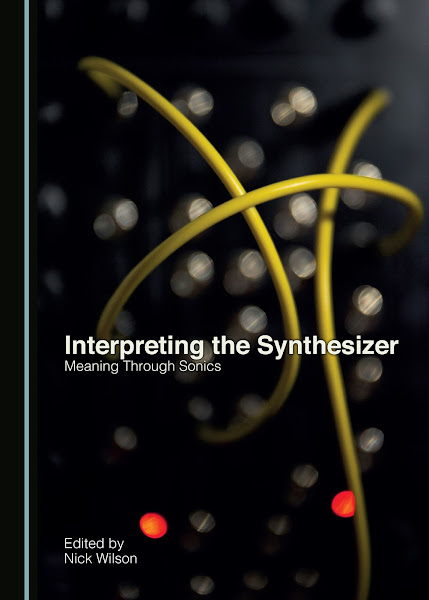
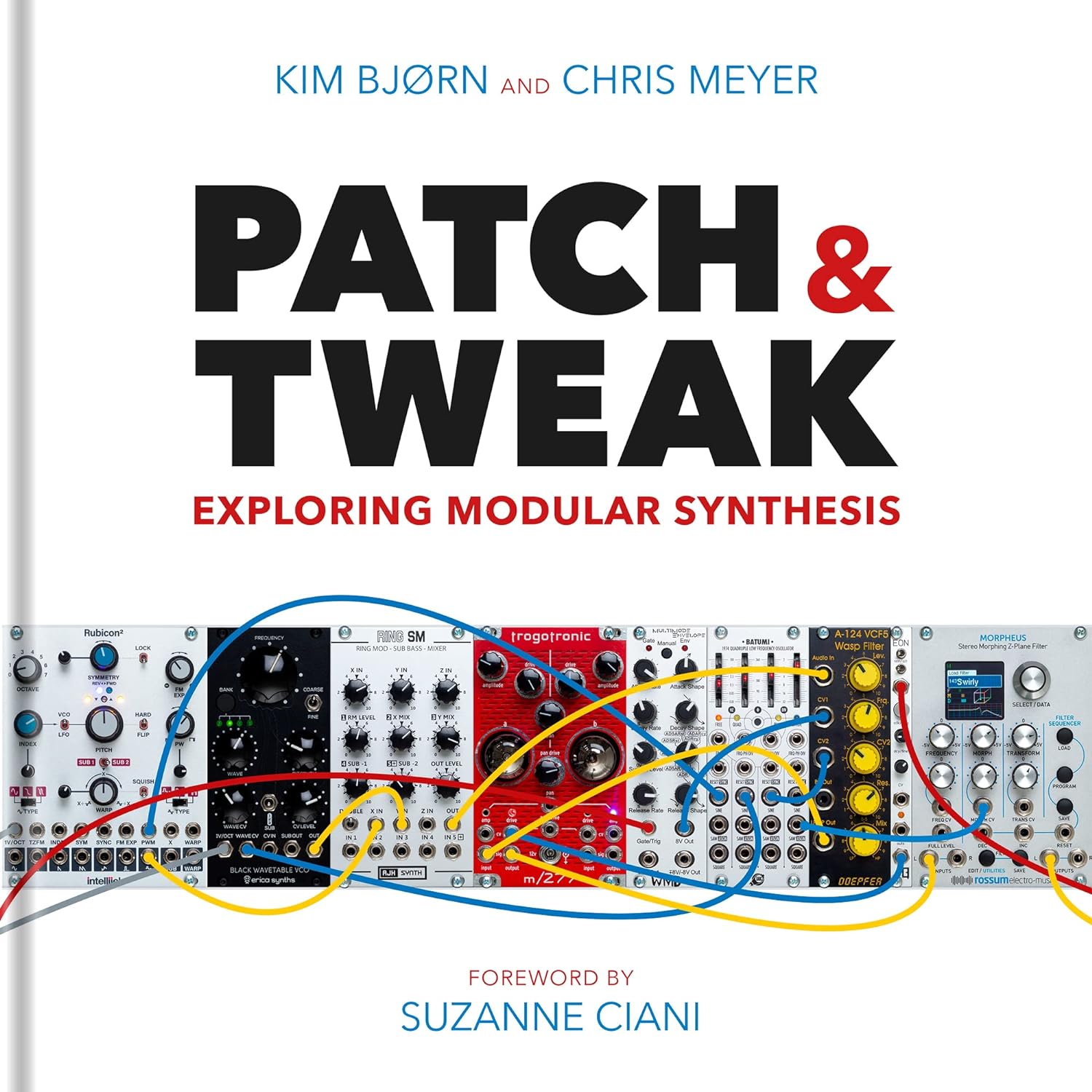

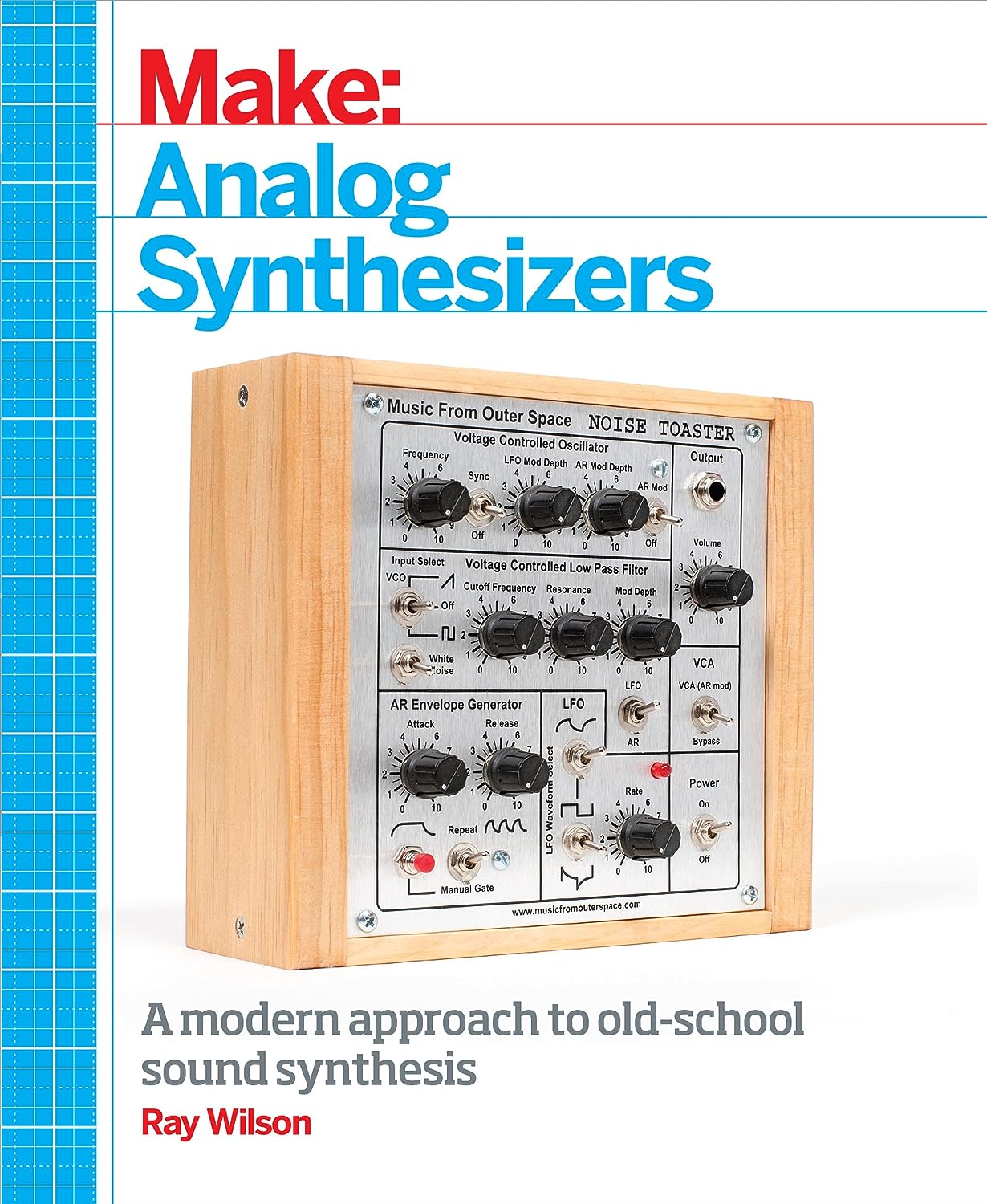

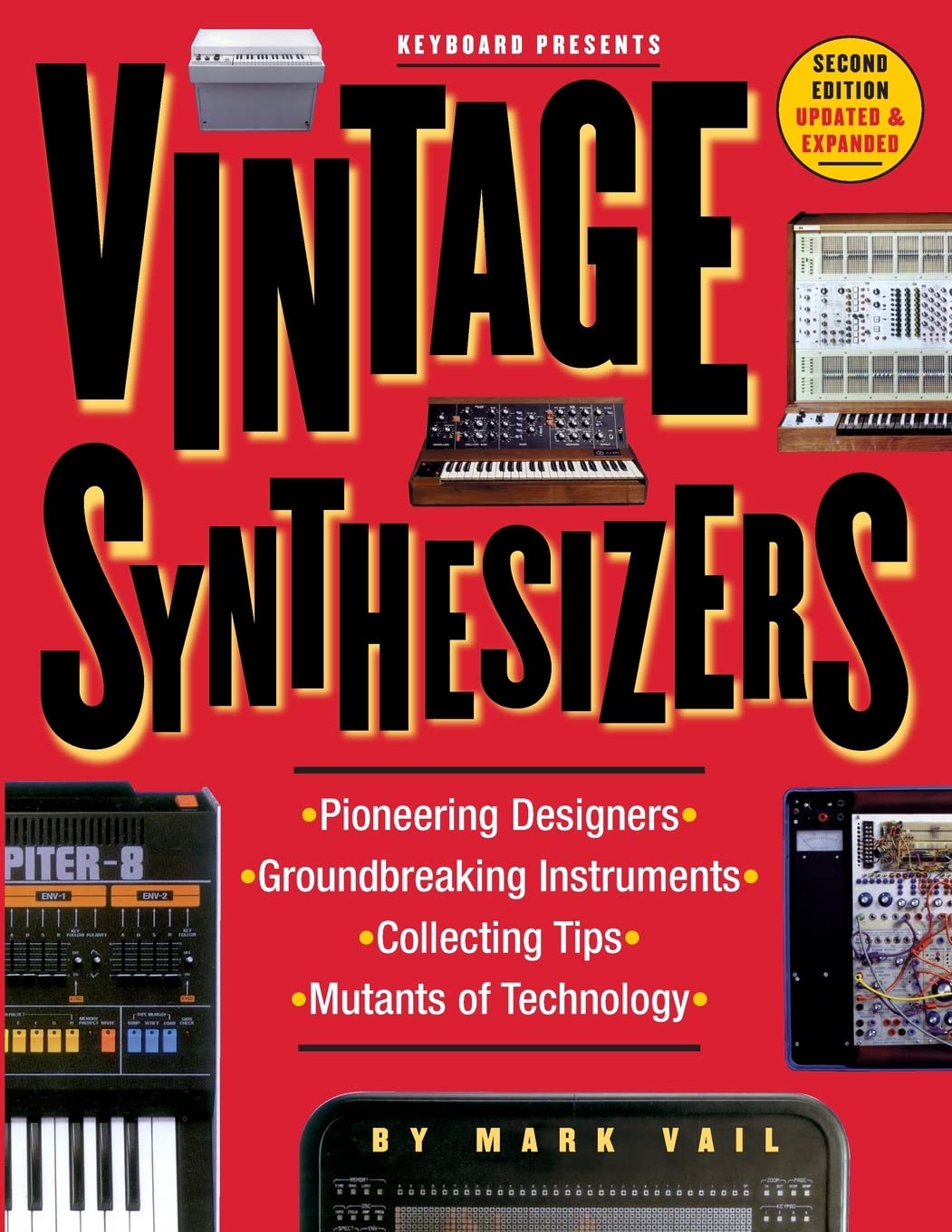
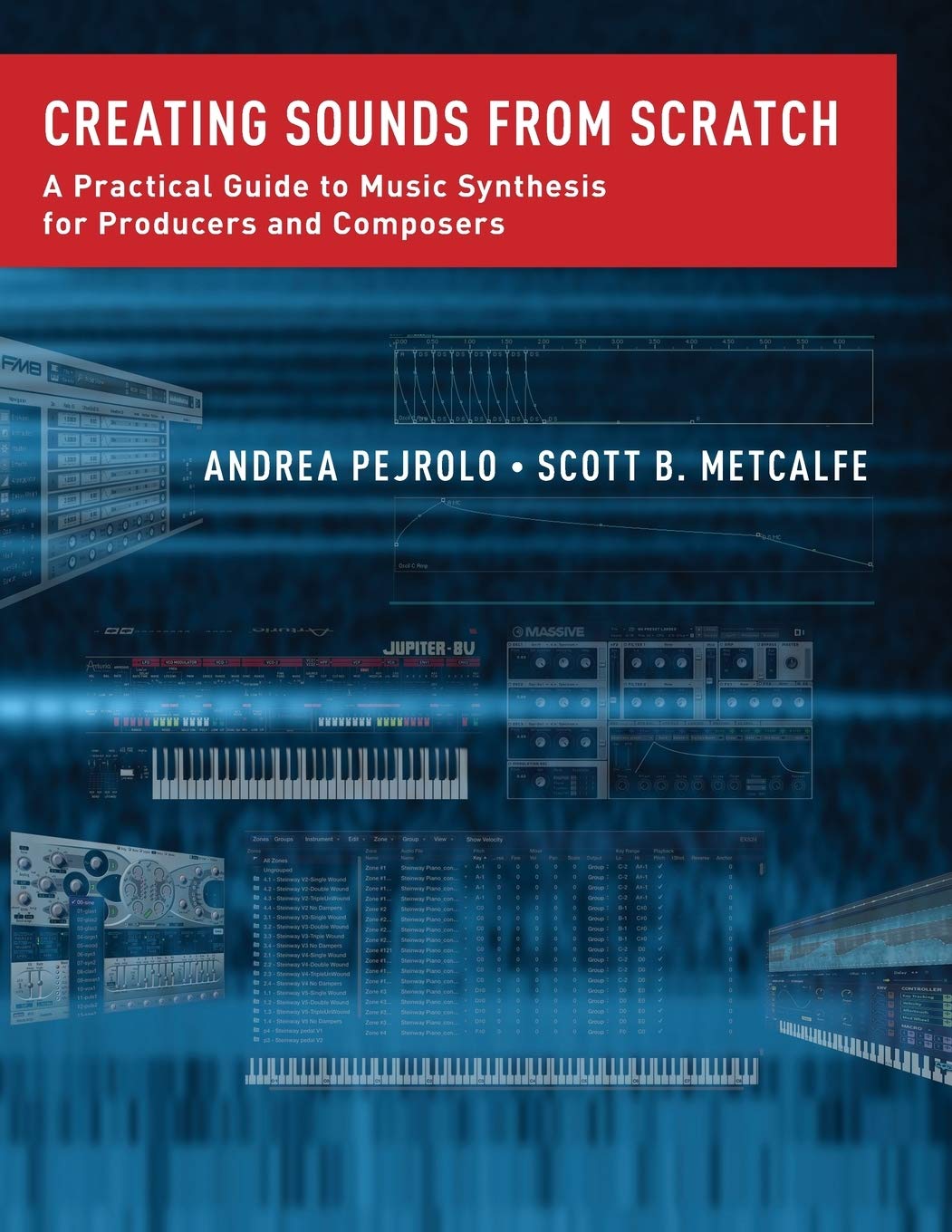
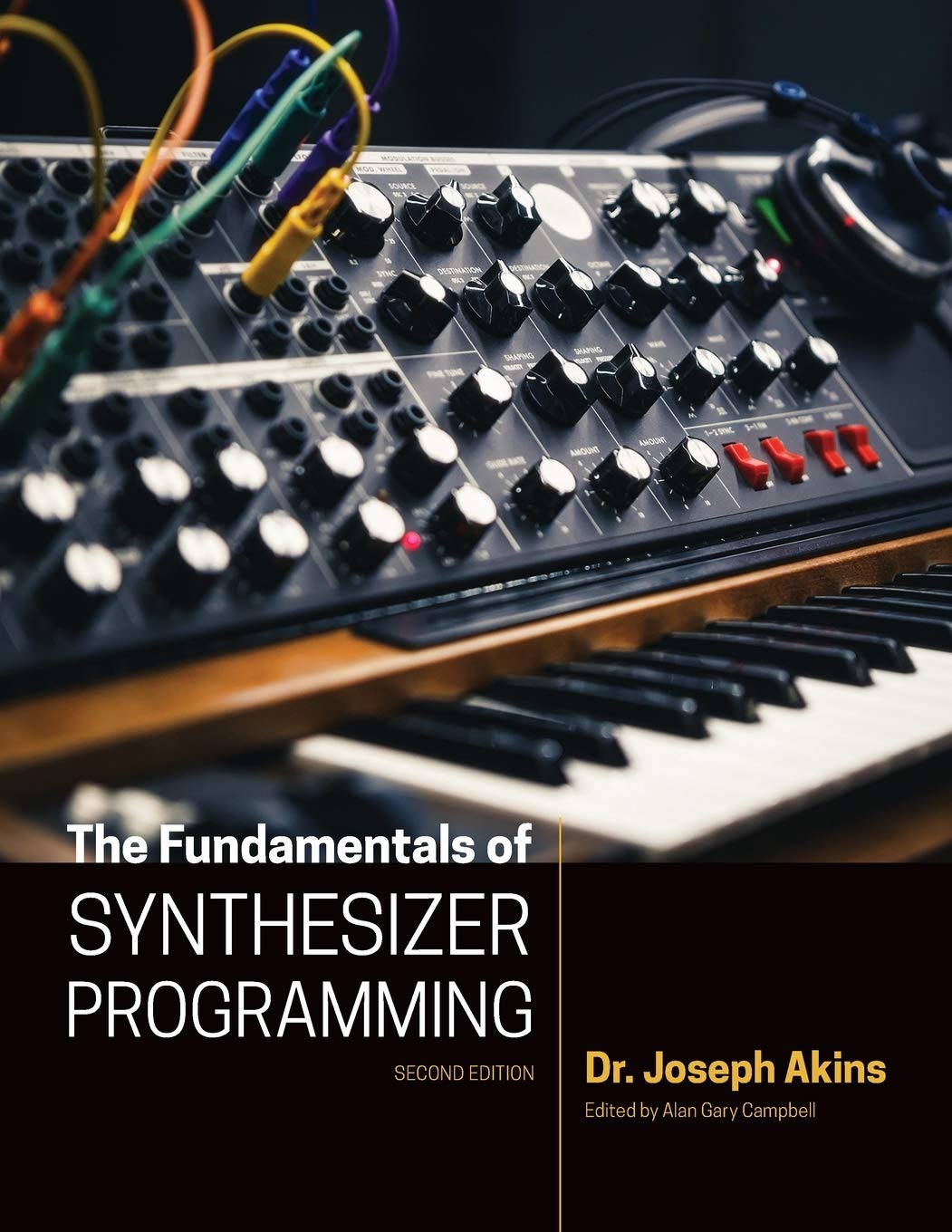

© Matrixsynth - All posts are presented here for informative, historical and educative purposes as applicable within fair use.
MATRIXSYNTH is supported by affiliate links that use cookies to track clickthroughs and sales. See the privacy policy for details.
MATRIXSYNTH - EVERYTHING SYNTH













© Matrixsynth - All posts are presented here for informative, historical and educative purposes as applicable within fair use.
MATRIXSYNTH is supported by affiliate links that use cookies to track clickthroughs and sales. See the privacy policy for details.
MATRIXSYNTH - EVERYTHING SYNTH





















